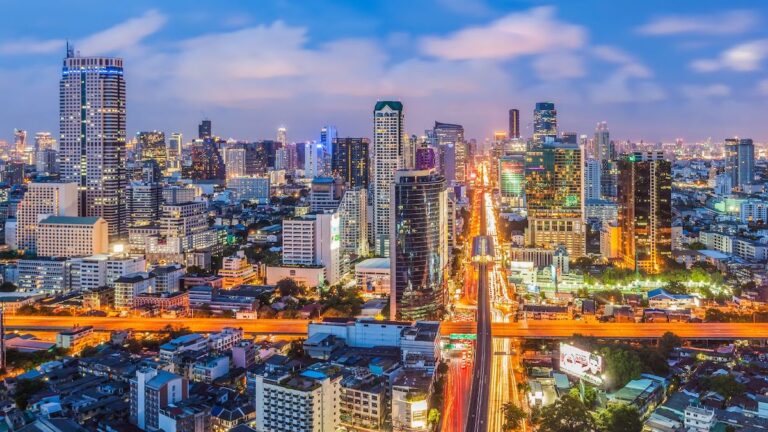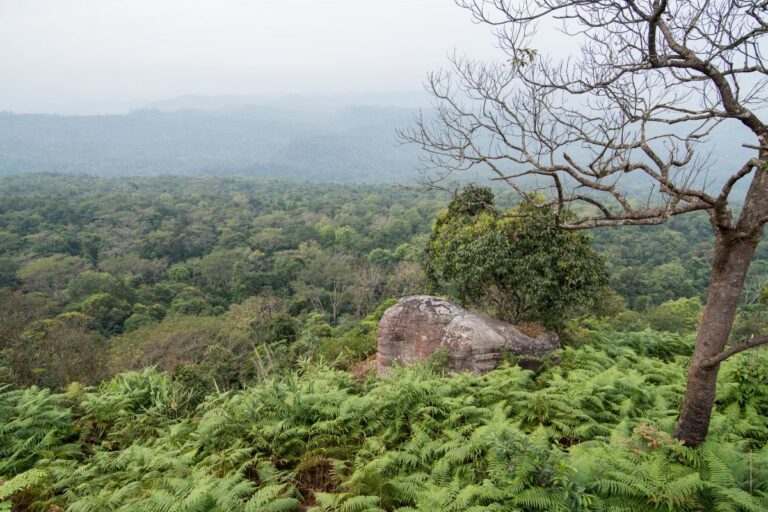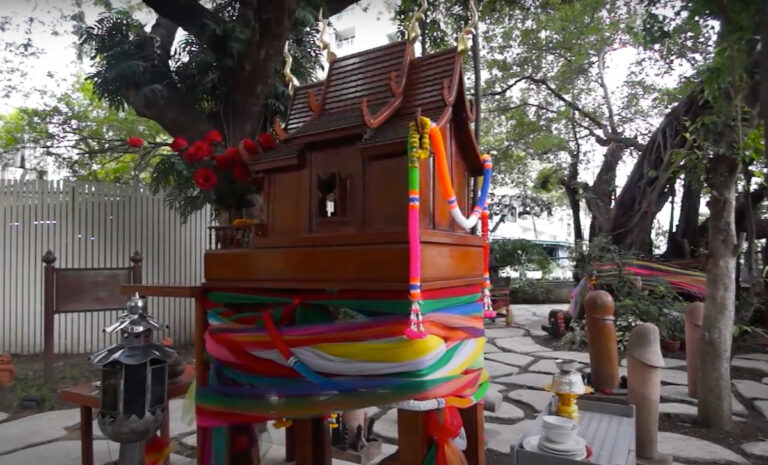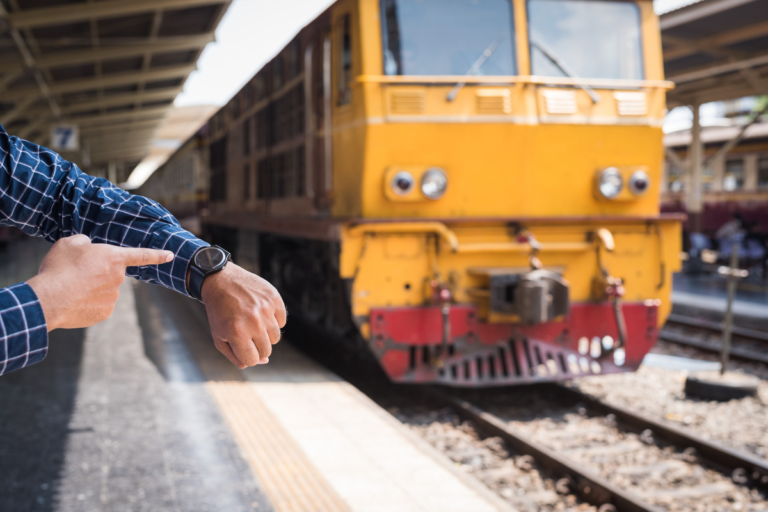Chinatown Bangkok
Located in the very heart of the city, Chinatown is a very exciting and lively place to explore! You can walk along its narrow lanes and colorful markets and immediately feel the unique mix of Chinese and Thai cultures. It’s like diving into a whole different world altogether.

The smells of delicious street food stalls are simply irresistible! From tempting dim sum to flavorsome Peking duck and noodles, to watching street performances, there are so many attractions. And hey, don’t miss out on checking out the cool stores selling all sorts of stuff, from herbal remedies to beautiful gold jewelry!
Chinatown is more than just a food haven. It’s also packed with historical attractions and old temples.
Below, we will describe all the main attractions of Chinatown to have an unforgettable experience. Also, you will find out how to get to Chinatown Bangkok and what are the must-try foods.
History of Chinatown Bangkok
In the early 1780s, following the rise of King Rama I, many Chinese settlers moved to Bangkok. This marked the beginning of the vibrant Chinatown (Yaowarat) we know today. Originally, Chinatown was located a bit further to the north of Bangkok. However, King Rama I designated Thonburi as Thailand’s capital. Consequently, Chinese traders were requested to vacate the region, leading to their relocation further downstream along the river. That’s where the Chinatown is located nowadays.
As you stroll along the busy streets, you’ll notice the unique blend of Thai and Chinese cultures.
When King Rama I decided to establish Bangkok as the new capital, he encouraged Chinese merchants to move to the area currently known as Chinatown. Consequently, this district became the economic heart of Bangkok, and its Chinese residents began to make their mark on the city.
During your visit, you can explore the unique sites that highlight Chinatown’s rich history:
- Wat Traimit – Home to the world’s largest solid gold Buddha statue weighing 5.5 tons.
- Odeon Circle – The entrance to Chinatown, with a ceremonial Chinese gate that was built in 1999 to celebrate King Bhumibol’s 72nd birthday.
Another crucial aspect of Chinatown’s history is the prosperous trade. The area is filled with markets, making it an excellent spot for shopping. Some iconic markets to visit include:
- Saphan Phut Market
- Pak Khlong Talat Market
- Klong Thom Market
Throughout the years, Chinatown became more than just a hub for Chinese immigrants. It is also a center of various Chinese festivals such as the Lunar New Year and the Vegetarian Festival.
Chinatown’s past is a story of immigration, culture, and change. Over time, it has blended ancient traditions with modern living, which is a true must-visit.
Yaowarat Road
Yaowarat Road is the main street and the heart of Bangkok’s Chinatown, where you can experience a mix of Thai and Chinese culture. It is easily accessible by taxi, Grab, or MRT.

Walking along this road, you will find a variety of scrumptious street food stalls, restaurants, countless gold shops, and very unique architecture.
When exploring Yaowarat Road, do not miss the street food that the area is famous for. You should try some must-try bites, such as:
- Grilled seafood – served with a spicy dipping sauce
- Bird’s nest soup – a uniquely Chinese delicacy
- Mango sticky rice – a sweet treat for your taste buds
- Dim sum – perfect for a quick snack or as part of your meal
To fully embrace the area’s unique atmosphere, join a sightseeing tour. Here are a few spots that we recommend:
- Wat Traimit – A beautifully adorned temple housing the world’s largest solid gold Buddha statue
- Sampeng Lane – A busy and narrow market alley for bargain hunters
- Chinatown Gate – The symbolic entrance to Chinatown, adorned with an intricate dragon design
As for gold shopping, Yaowarat Road is well-known for having the most gold shops in Bangkok, with many options for any budget. If you’re looking for something different, you’ll also find various gem, jade, and pearl stores throughout your visit. But be cautious and ensure you’re buying from a reputable seller to avoid any scams.
While enjoying your time in Chinatown, don’t forget to take some pictures of the stunning traditional Chinese shophouses, lantern-lit streets, and colorful Chinese temples.
Traditional Temples in Chinatown Bangkok
Wat Mangkon Kamalawat
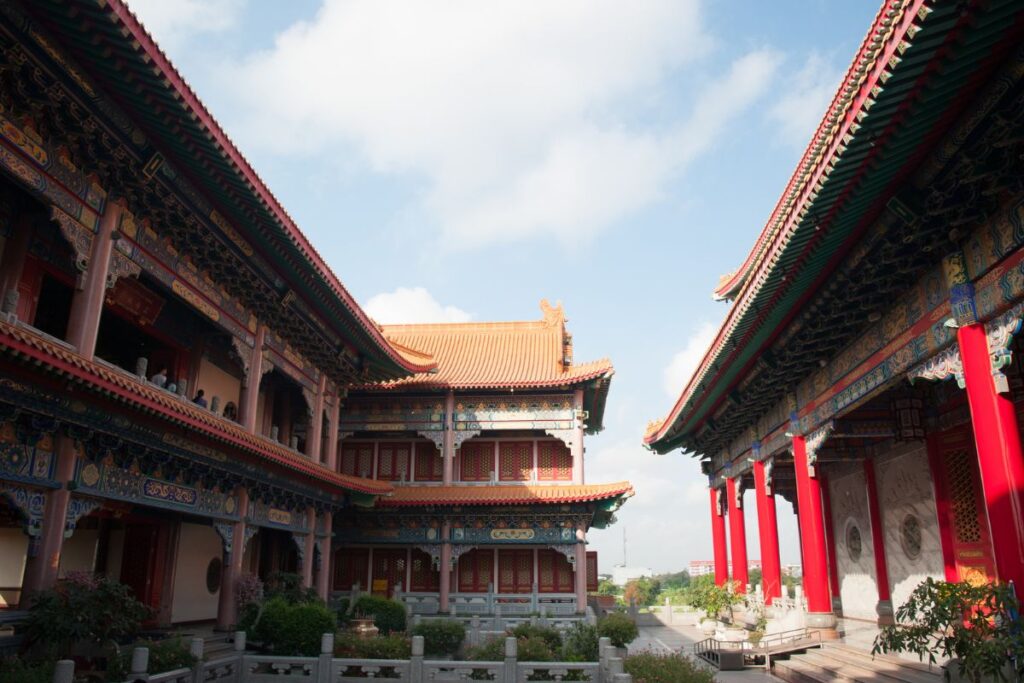
- Price: free entry
- Opening Hours: 8:00 AM – 4:00 PM
- Address: 423 Charoen Krung Road, Pom Prap, Pom Prap Sattru Phai, Bangkok 10100, Thailand
This temple, also known as the Dragon Lotus Temple, holds a special place in the hearts of the local Chinese-Thai community. It is the largest Chinese temple in Bangkok and was founded back in 1871. As you explore, you’ll see intricate, colorful roof tiles and lanterns, and admire the beautifully crafted Buddha statues. During Chinese festivals, such as the Lunar New Year and the Vegetarian Festival, this temple is visited by thousands of people, so plan your visit accordingly.
Wat Samphanthawongsaram (Wat Ko)
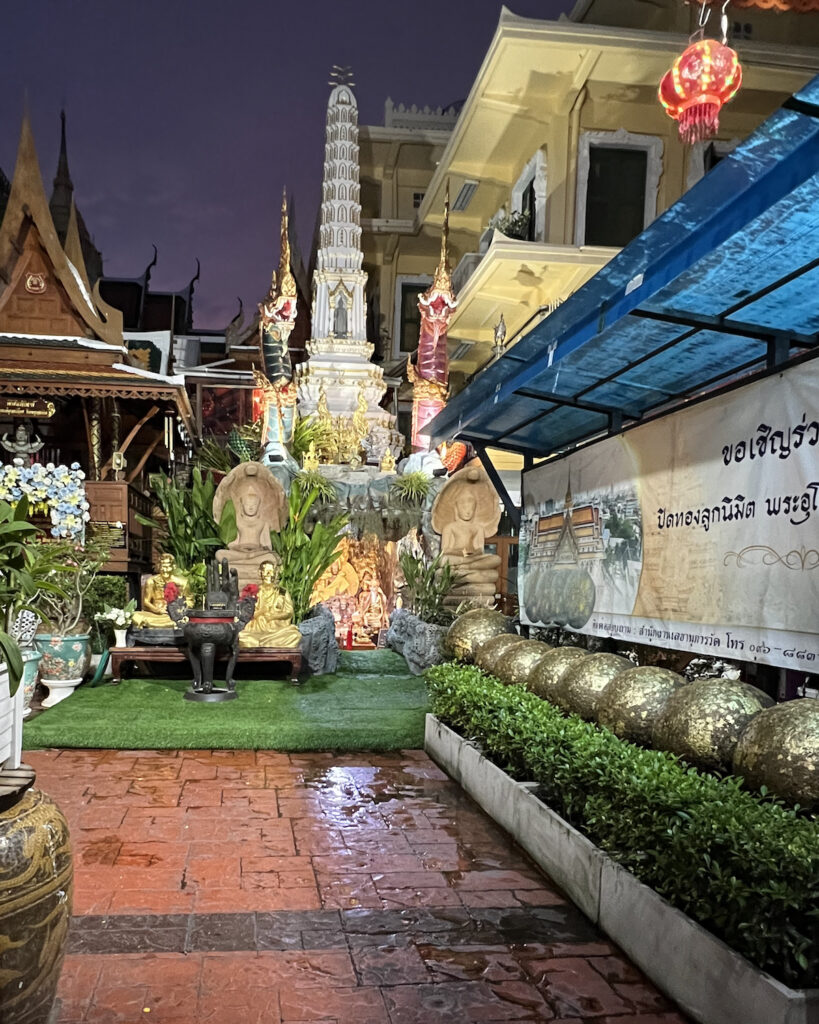
- Price: free entry
- Opening Hours: 8:00 AM – 4:00 PM
- Address: 579 Song Sawat Rd, Samphanthawong, Bangkok 10100, Thailand
Wat Samphanthawongsaram is nestled in a peaceful corner of Bangkok’s Chinatown. The temple dates back several centuries, possibly to the Ayutthaya period, making it a historically significant site. Its founding and construction have connections to the early Chinese immigrants who settled in the area. This third-grade royal Buddhist temple has a very serene atmosphere, allowing you to appreciate its delicate artwork.
Wat Traimit Withayaram Worawihan (Golden Buddha)

- Price: Admission Fee (Golden Buddha itself) 100 THB
- Opening Hours: 8:00 AM – 5:00 PM
- Address: 661 Charoen Krung Road, Talat Noi, Samphanthawong, Bangkok 10100, Thailand
Wat Traimit is home to the impressive Golden Buddha. Weighing an astonishing 5.5 tons and standing 3 meters tall, the statue is made of solid gold and is approximately 700 years old. This remarkable treasure was once hidden beneath a layer of plaster and discovered entirely by accident during a relocation effort!
Wat Chakrawatrachawat Woramahawihan (Wat Sam Pluem)
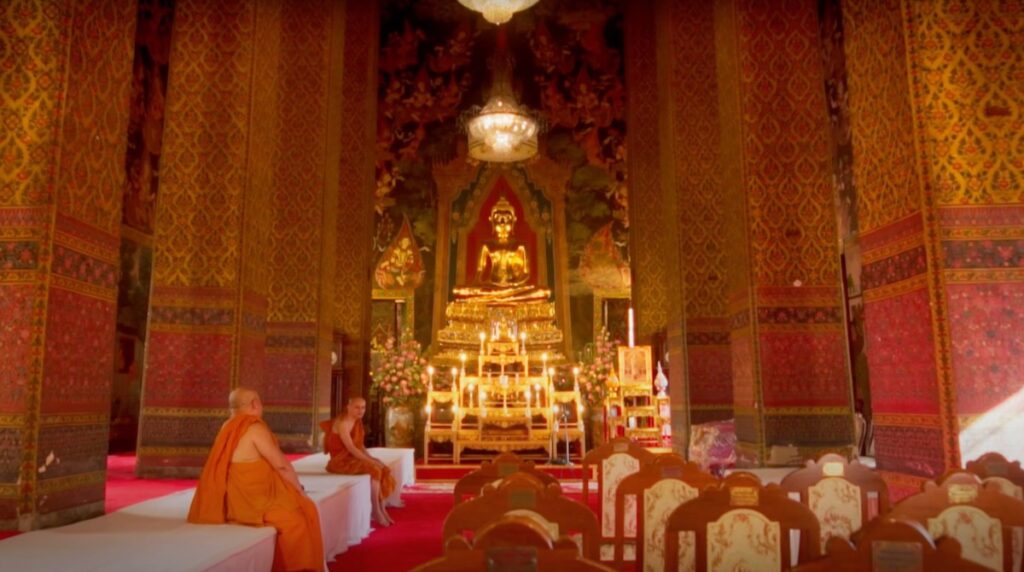
- Price: free entry
- Opening Hours: 8:00 AM – 4:30 PM
- Address: 225 ถนน จักรวรรดิ Chakkrawat, Samphanthawong, Bangkok 10100, Thailand
Wat Chakrawatrachawat Woramahawihan or simply Crocodile Temple is a historically important temple in Bangkok’s Chinatown. Originally this temple was named Wat Nang Pluem, but later changed to Wat Sam Pluem.
What’s most unusual about this temple is that it has a small pond with crocodiles!
Street Food – Highlights and Must-Try Dishes
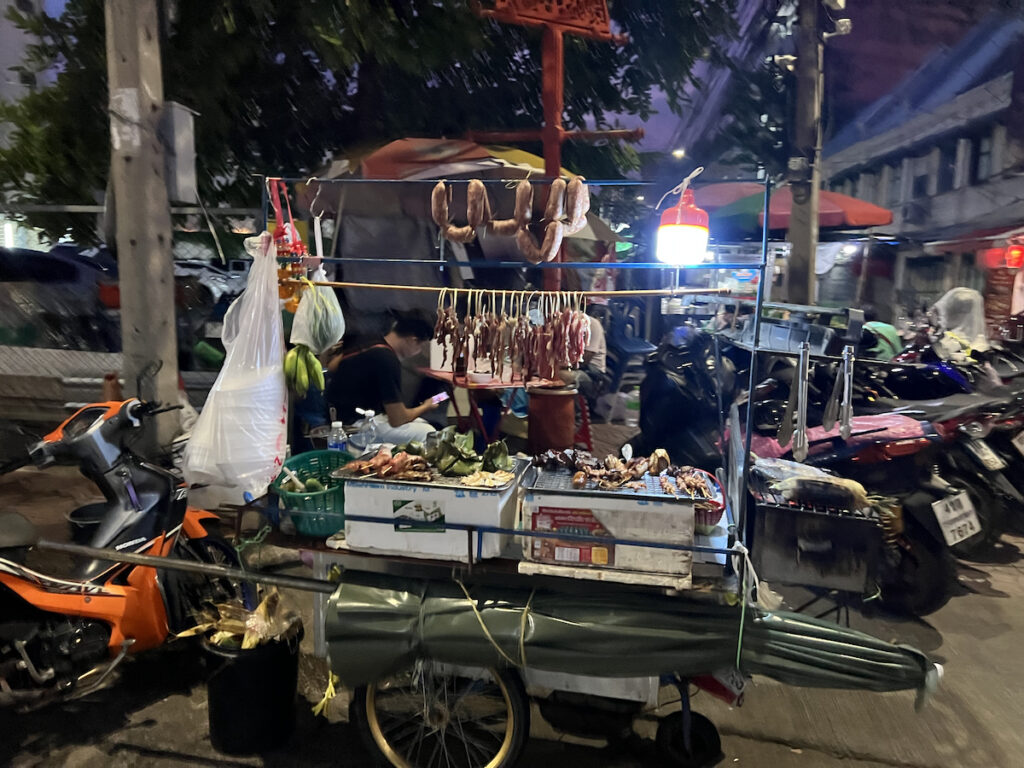
Must-Try Dishes
When strolling through the lively streets of Chinatown Bangkok, you’ll be amazed by the variety of street food options that await your taste buds. Here are some must-try dishes that you shouldn’t miss:
- Grilled Squid: Relish in the smoky, tender, and umami-packed flavor that will leave you craving more.
- Kuay Jub (Chinese Roll Noodle Soup): Perfect for rainy days, this comforting soup is packed with succulent pork and rolled noodles.
- Crispy Oyster Omelette: A marriage of crispy batter, juicy oysters, and tangy sauce that will make your mouth water.
- Patonggo (Fried Dough Sticks or You Tiao: great with kaya sauce!
- Yaowarat Toasted Bread: Butteret toast with different toppings.
- Mango Sticky Rice: A sweet and satisfying dessert, featuring ripe mangoes paired with soft, glutinous rice and drizzled with coconut cream.
- Seafood: lobsters, shrimps and whatnot!
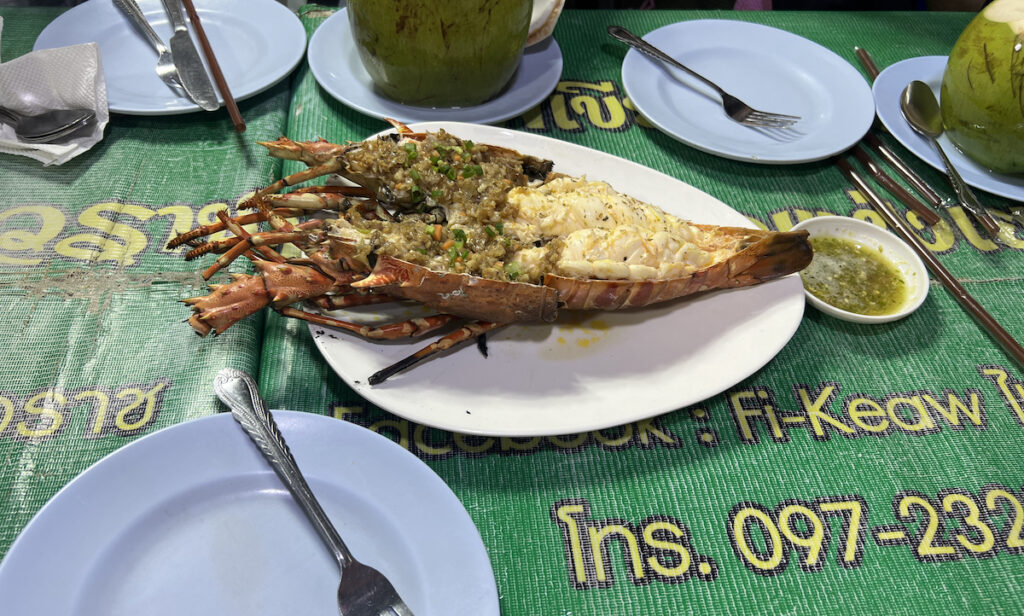
Popular Food Stalls and Eateries
Now that you’re aware of some must-try dishes, here are some popular food stalls and eateries where you can enjoy them. Remember to arrive early, as queues can get long.
- T&K Seafood: (Grilled Squid) A local favorite, you’ll spot the red chairs instantly. Savor the freshly grilled squid while soaking in the bustling atmosphere.
- Hua Seng Hong Restaurant: (Dim Sum) Surrounded by locals, this unassuming eatery offers amazingly delicious Chinese dishes.
- Yaowarat Toasted Buns: For a sweet treat, stop by this stall to try their buns with various toppings like coconut custard and pandan custard. A perfect end to your food adventure!
Always remember to explore the vibrant street food scene in Chinatown Bangkok on an empty stomach and an open mind!
Shopping in Chinatown
Fancy a shopping spree in Chinatown, Bangkok? You’re in for a treat! This place is a treasure trove of diverse goods, showcasing both Chinese traditions and Thai specialties.
Gold Galore: If bling is your thing, hit up Yaowarat Road! There are heaps of shops selling stunning gold jewelry in different styles and karats.
Chinese Classics: Wander through the streets and you’ll come across stores vending a mix of Chinese goodies like herbal medicines, tea, antiques, and beautiful porcelain items.
Street Market Buzz: The streets are alive with street vendors selling everything from clothes and accessories to cute little trinkets. It’s a real kaleidoscope of things to check out.
Foodie Paradise: While shopping, don’t miss the food markets. You’ll find fresh produce, spices, and cooking ingredients, giving you a peek into local flavors.
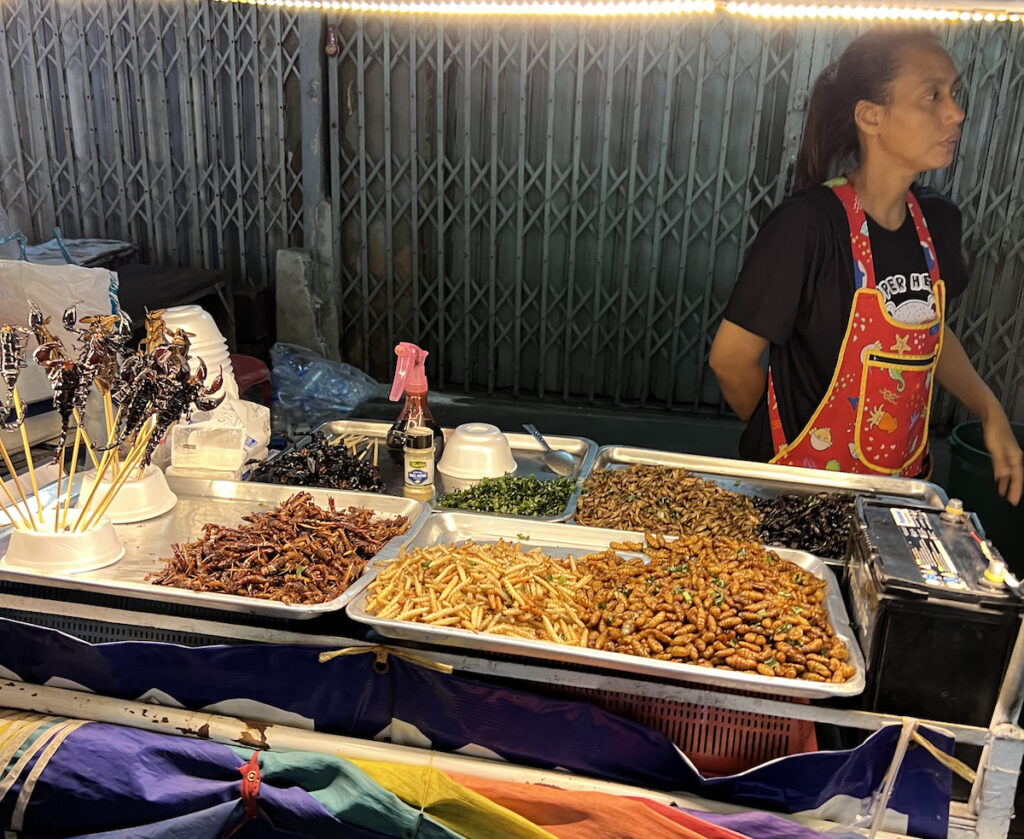
Local Stops: Big shops and warehouses here offer various items, from kitchen stuff to souvenirs. It’s worth comparing prices and even bargaining a bit in smaller shops and markets.
Sampeng Market is a popular open-air market, loved by both locals and tourists. Here, you can find a wide range of goods, from clothing and accessories to home decor and electronic gadgets. Remember to bring your bargaining skills, as you may be able to snag fantastic deals at lower prices!
Open: Daily from 09.00 – 17.00 | Address: Soi Wanit 1
For those who love to accessorize, Khlong Thom Market is the perfect spot. This market specializes in jewelry and gemstones, offering a stunning selection to accent any outfit. Explore rows of vendors displaying earrings, necklaces, and rings in a dazzling array of colors and styles.
If you’re searching for traditional Chinese products, head over to the Soi Wanit 1 area. In this street, you’ll find shops selling:
- Chinese herbs
- Teas
- Dried food
- Traditional Chinese medicines
- Ceremonial items
Finally, when shopping in Chinatown Bangkok, be sure to bring a reusable bag for your purchases, as plastic bags may be limited. Enjoy your shopping adventure and uncover hidden treasures in this vibrant district.
How to get to Chinatown Bangkok
Getting to Chinatown Bangkok is fairly easy and convenient, thanks to the numerous transportation options available. Here, we will explore three popular means of transit: MRT, Boat, and Taxi.
MRT
Chinatown is easily accessible by MRT, Bangkok’s underground metro system. The nearest station, Wat Mangkon Station, is just a short walk from the heart of Chinatown. MRT is quick, efficient, and offers a respite from the bustling streets outside. Follow these simple instructions to reach Chinatown by MRT:
- Take the MRT Blue line.
- Exit at Wat Mangkon Station.
- Exit the station and walk towards Yaowarat Road, where the main attractions lie.
Ticket prices vary depending on the distance traveled, with fares ranging between 16-42 THB.
Boat
Another enjoyable way to reach Chinatown is by taking a riverboat. Several piers along the Chao Phraya River provide access to the district, such as Ratchawong Pier and Yodpiman River Walk. Boat services operate daily from early morning until late evening. To take the boat, follow these steps:
- Head to a pier that offers Chao Phraya River boats.
- Hop on the boat heading towards either Ratchawong Pier or Yodpiman River Walk.
- Disembark at your desired pier and explore the area.
The boat ride also offers a scenic view of the city, with fares ranging from 10-20 THB per trip.
Taxi
If you prefer a more direct mode of transportation, taxis are widely available throughout Bangkok. However, keep in mind that the traffic in Chinatown can be quite hectic, especially during peak hours. When taking a taxi:
- Ensure the driver turns on the taxi meter.
- Be prepared for potential traffic and delays.
- Estimate the fare, which typically starts at 35 THB and increases with distance.
Whether you’re a food enthusiast, a history buff, or just an adventurer seeking new experiences, Chinatown Bangkok has something to offer everyone. So, put on your walking shoes, withdraw some cash (you’ll want to spend it here!), and start your adventure!

